Spain Cuisine Food offers a vibrant tapestry of flavors, a testament to the country’s rich history and diverse regional influences. FOODS.EDU.VN invites you on a delectable journey to discover the very best of Spanish gastronomy, providing you with enticing recipes and invaluable culinary insights. Dive in to explore traditional Spanish dishes, regional delicacies, and modern culinary interpretations that define the heart of Spanish cooking, complete with delectable food preparation tips.
1. Gazpacho: Andalusia’s Refreshing Liquid Salad
Gazpacho is more than just a cold soup; it’s a celebration of summer’s bounty. Originating from Andalusia, this chilled delight combines ripe tomatoes, cucumbers, peppers, garlic, and bread, all blended to a silky-smooth texture. It’s a staple in southern Spain, offering a refreshing escape from the heat.
The magic of gazpacho lies in its simplicity and the quality of its ingredients. Each spoonful delivers a burst of fresh, vibrant flavors, making it a perfect starter or light meal. For a richer twist, explore Salmorejo from Córdoba, a thicker variation often adorned with Iberian ham.
Key Ingredients and Preparation Tips:
- Tomatoes: Choose the ripest, reddest tomatoes for the best flavor.
- Olive Oil: Use high-quality extra virgin olive oil for a richer taste.
- Blending: Blend until completely smooth for a luxurious texture.
- Chilling: Chill for at least two hours to allow flavors to meld.
FOODS.EDU.VN Insight: Discover how regional variations of gazpacho incorporate unique ingredients, enhancing this classic Spanish recipe and creating culinary artistry.
2. Paella: Valencia’s Iconic Rice Dish
Paella is arguably Spain’s most famous dish, a vibrant rice creation that embodies the essence of Spanish cuisine. Originating from Valencia, paella is traditionally cooked in a large, shallow pan over an open fire, creating a socarrat (crispy rice layer) at the bottom that is highly prized.
The most authentic paella, Paella Valenciana, features chicken or rabbit, saffron, runner beans, and butter beans. The rice, ideally Bomba or Calasparra, is crucial for absorbing the flavors. Seafood paella, with prawns, mussels, and clams, is another popular variant.
Essential Elements for Perfect Paella:
- Rice: Use Bomba or Calasparra rice for optimal flavor absorption.
- Saffron: Adds a distinctive color and aroma.
- Socarrat: Achieve a crispy rice layer at the bottom for an authentic touch.
- Stock: Use high-quality stock to infuse the rice with flavor.
FOODS.EDU.VN Insight: Uncover the secrets to achieving the perfect socarrat and explore innovative paella variations that elevate this traditional dish.
3. Tortilla Española: The Quintessential Spanish Omelette
Tortilla Española, or Spanish omelette, is a deceptively simple dish that relies on perfect execution. It consists of eggs, potatoes, and sometimes onions, slow-fried in olive oil until tender and then combined with beaten eggs. The result is a thick, savory omelette that is both comforting and satisfying.
While some purists argue against adding onions, they add a layer of sweetness that complements the earthy potatoes. Tortilla Española is often served as a tapa, a slice of a larger omelette, or as a main course, accompanied by bread and salad.
Tips for Making the Best Tortilla Española:
- Slow Frying: Fry the potatoes and onions slowly to ensure they are tender.
- Olive Oil: Use plenty of olive oil for a rich flavor and texture.
- Patience: Cook the omelette over low heat to prevent burning.
- Flip Technique: Use a plate to flip the omelette safely.
FOODS.EDU.VN Insight: Learn the art of achieving the perfect consistency and discover creative additions that enhance the traditional Spanish omelette recipe.
4. Gambas al Ajillo: Sizzling Garlic Shrimp
Gambas al Ajillo is a quintessential Spanish tapa, known for its simplicity and explosive flavor. It features shrimp sautéed in olive oil with garlic, chili, and parsley. The dish is typically served sizzling hot in an earthenware dish, inviting you to savor each garlicky, succulent bite.
The key to great Gambas al Ajillo is using fresh, high-quality shrimp and not overcooking them. The garlic should be fragrant but not burnt, and the chili should add a subtle kick without overpowering the dish.
Secrets to Perfect Gambas al Ajillo:
- Fresh Shrimp: Use fresh, high-quality shrimp for the best flavor.
- Garlic Infusion: Sauté the garlic in olive oil until fragrant but not burnt.
- Chili Kick: Add a touch of chili for a subtle heat.
- Quick Cooking: Cook the shrimp quickly to prevent overcooking.
FOODS.EDU.VN Insight: Explore advanced techniques for achieving the perfect garlic-to-shrimp ratio and discover unique flavor pairings that transform this classic tapa.
5. Tostas de Tomate y Jamón: A Simple Slice of Spanish Heaven
Tostas de Tomate y Jamón, or Tomato and Ham Toast, is a simple yet exquisite pleasure. It features toasted bread rubbed with garlic and ripe tomato, drizzled with olive oil, and topped with slices of Jamón Ibérico, a cured ham known for its rich, nutty flavor.
The beauty of this dish lies in the quality of its ingredients. The tomatoes should be ripe and juicy, the olive oil fragrant, and the Jamón Ibérico of the highest quality. Each bite is a harmonious blend of flavors and textures, showcasing the best of Spanish gastronomy.
Essential Tips for the Ultimate Tostas:
- Bread Selection: Choose high-quality, crusty bread for toasting.
- Tomato Rub: Use ripe, juicy tomatoes and rub generously.
- Olive Oil Drizzle: Drizzle with high-quality extra virgin olive oil.
- Ibérico Ham: Use thinly sliced Jamón Ibérico for the best flavor.
FOODS.EDU.VN Insight: Dive into the world of Spanish cured meats, discover how to perfectly pair Tostas de Tomate y Jamón with regional wines, and create an authentic Spanish tapas experience.
6. Patatas Bravas: Spain’s Spicy Potato Tapas
Patatas Bravas, or spicy potatoes, are a staple of Spanish tapas culture. Chunks of fried potato are served with a spicy bravas sauce, which varies regionally but typically includes pimentón (Spanish paprika), olive oil, flour, and stock. Some variations also include tomatoes, garlic, or sherry.
The key to great Patatas Bravas is achieving crispy potatoes and a flavorful, spicy sauce. The potatoes should be golden brown and slightly crunchy, while the sauce should have a balance of sweet, spicy, and smoky flavors.
Achieving Perfect Patatas Bravas:
- Potato Preparation: Cut potatoes into uniform chunks for even frying.
- Frying Technique: Fry potatoes until golden brown and crispy.
- Bravas Sauce: Use high-quality pimentón for an authentic flavor.
- Spice Level: Adjust the spice level to your preference.
FOODS.EDU.VN Insight: Learn the regional variations of Patatas Bravas sauce, explore creative toppings and serving suggestions, and master the art of crafting the perfect balance of spice and flavor.
7. Pollo al Ajillo: Grandma’s Garlic Chicken
Pollo al Ajillo, or garlic chicken, is a classic Spanish dish that evokes the warmth and comfort of home cooking. Chicken pieces are fried with unpeeled garlic cloves in olive oil, infusing the dish with a rich, garlicky flavor. Rosemary, thyme, sherry, or white wine are often added for extra depth.
Every Spanish family has their own version of Pollo al Ajillo, passed down through generations. The key is to use high-quality ingredients and cook the chicken until it is tender and flavorful.
Tips for Creating the Ultimate Pollo al Ajillo:
- Garlic Infusion: Fry unpeeled garlic cloves to infuse the oil with flavor.
- Chicken Browning: Brown the chicken pieces for a richer taste.
- Herb Combination: Experiment with different herb combinations for unique flavors.
- Wine Deglazing: Deglaze the pan with sherry or white wine for added depth.
FOODS.EDU.VN Insight: Discover how to adapt Pollo al Ajillo with modern cooking techniques, explore the rich history and cultural significance of this beloved dish, and create unforgettable culinary experiences.
8. Cochinillo Asado: Roast Suckling Pig
Cochinillo Asado, or roast suckling pig, is a culinary masterpiece that is particularly popular in Segovia. The pig is roasted in a wood-fired oven until the skin is crispy and the meat is incredibly tender. It’s so tender that it is traditionally cut with the side of an earthenware plate.
Cochinillo Asado is a symbol of Spanish gastronomy, celebrated for its rich flavor and delicate texture. It’s often served with simple accompaniments, allowing the quality of the meat to shine.
Mastering the Art of Cochinillo Asado:
- Pig Selection: Choose a high-quality suckling pig for the best results.
- Oven Temperature: Maintain a consistent oven temperature for even cooking.
- Skin Crisping: Baste the pig with lard or olive oil to achieve crispy skin.
- Resting Time: Allow the pig to rest before carving for optimal tenderness.
FOODS.EDU.VN Insight: Learn about the historical and cultural significance of Cochinillo Asado, discover the secrets to achieving perfect skin crispiness, and create unforgettable gastronomic moments.
9. Pisto: Spain’s Hearty Vegetable Stew
Pisto is the Spanish version of ratatouille, a hearty vegetable stew that varies regionally but typically includes onions, garlic, courgettes, peppers, and tomatoes. It’s slow-fried in olive oil, allowing the flavors to meld and deepen.
Pisto is often served as a starter, a side dish, or as a topping for fried eggs or chorizo. It’s a versatile and nutritious dish that showcases the best of Spanish produce.
Creating the Perfect Pisto:
- Vegetable Prep: Cut vegetables into uniform sizes for even cooking.
- Slow Frying: Fry the vegetables slowly to develop their flavors.
- Olive Oil: Use plenty of olive oil for a rich taste and texture.
- Seasoning: Season generously with salt, pepper, and herbs.
FOODS.EDU.VN Insight: Explore the regional variations of Pisto, discover how to enhance the flavor with smoked paprika or sherry vinegar, and learn to create a colorful and nutritious culinary masterpiece.
10. Turrón: Spain’s Almond Nougat
Turrón is a traditional Spanish confection made from almonds, honey, and egg white. It’s particularly popular during Christmas but is available year-round. The two main types are Jijona, a soft, smooth version, and Alicante, a hard version with pieces of almond.
Turrón is a sweet and decadent treat that is perfect for sharing with friends and family. It’s a symbol of Spanish hospitality and celebration.
Creating Exceptional Turrón:
- Almond Quality: Use high-quality, locally-grown almonds for the best flavor.
- Honey Selection: Choose a flavorful honey to complement the almonds.
- Egg White Beating: Beat the egg whites to stiff peaks for a light texture.
- Setting Time: Allow the turrón to set properly before cutting and serving.
FOODS.EDU.VN Insight: Uncover the secrets of crafting authentic Turrón, explore variations with chocolate, candied fruits, or nuts, and discover how to create exquisite dessert experiences.
Delving into Spain Cuisine Food reveals not only delicious dishes but also the story of a nation rich in tradition, culture, and culinary innovation. Each dish, from the refreshing Gazpacho to the decadent Turrón, offers a unique insight into the heart of Spanish gastronomy. The use of high-quality ingredients, combined with time-honored techniques, ensures that every meal is a celebration of flavor and heritage. Whether you’re a seasoned chef or a home cook, exploring Spain’s culinary landscape promises a delightful adventure.
Spanish Cuisine: An Overview of Regional Diversity
| Region | Signature Dish | Key Ingredients | Characteristics |
|---|---|---|---|
| Andalusia | Gazpacho | Tomatoes, cucumbers, peppers, garlic, olive oil | Refreshing, chilled, vibrant flavors |
| Valencia | Paella | Rice, saffron, chicken/seafood, vegetables | Rich, flavorful, socarrat (crispy rice layer) |
| Catalonia | Pa amb tomàquet | Bread, tomato, garlic, olive oil | Simple, fresh, often served with cured meats |
| Basque Country | Marmitako | Tuna, potatoes, peppers, tomatoes | Hearty, flavorful, traditional fisherman’s stew |
| Galicia | Pulpo a la gallega | Octopus, paprika, olive oil, salt | Tender octopus, seasoned with paprika and olive oil |
| Madrid | Cocido Madrileño | Chickpeas, meats, vegetables, broth | Hearty stew, traditionally served in three courses |
| Castile-La Mancha | Pisto Manchego | Tomatoes, peppers, courgettes, onions | Vegetable stew, often served with fried eggs |
| Murcia | Zarangollo Murciano | Courgettes, onions, eggs | Scrambled eggs with courgettes and onions |
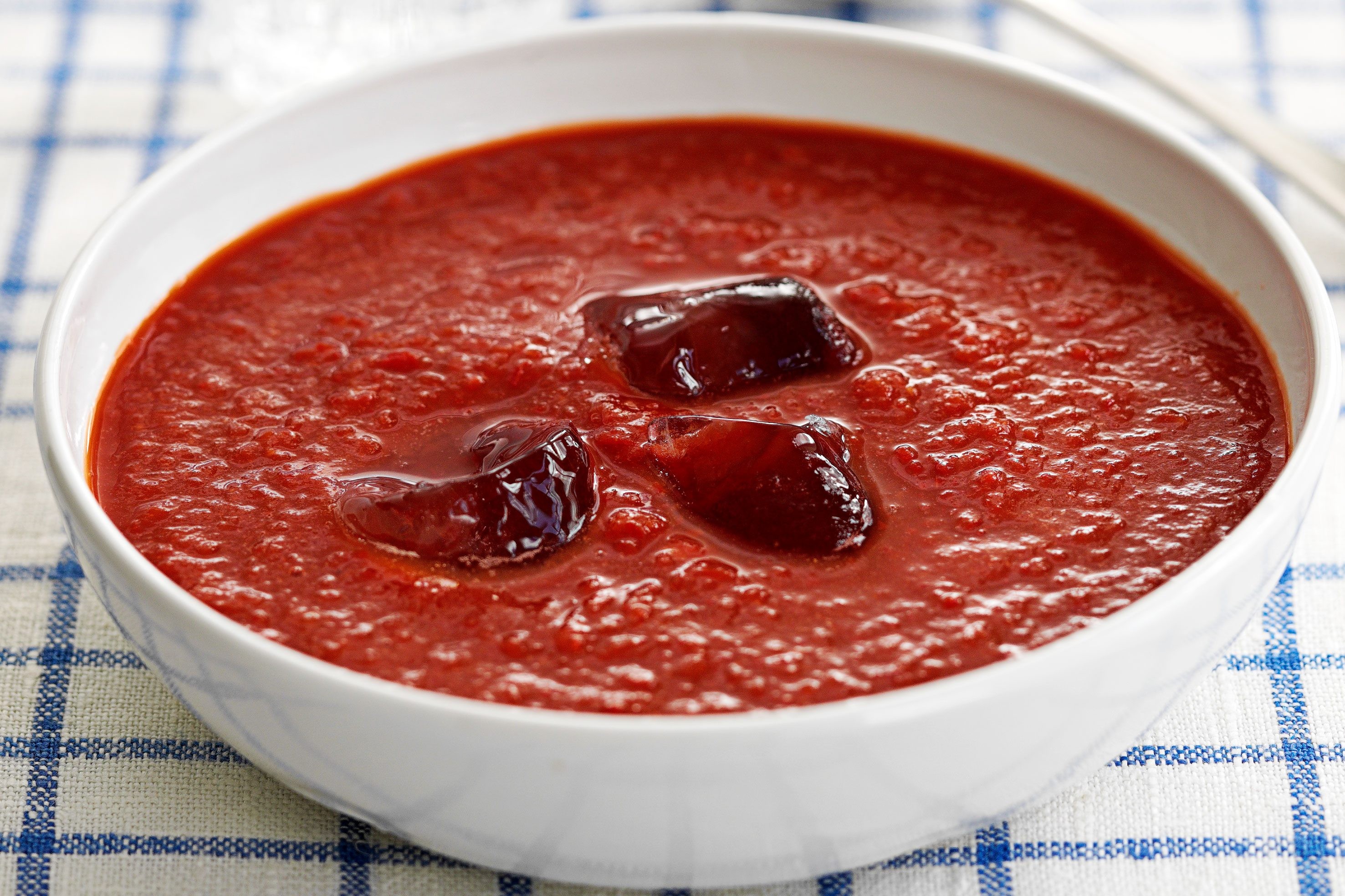
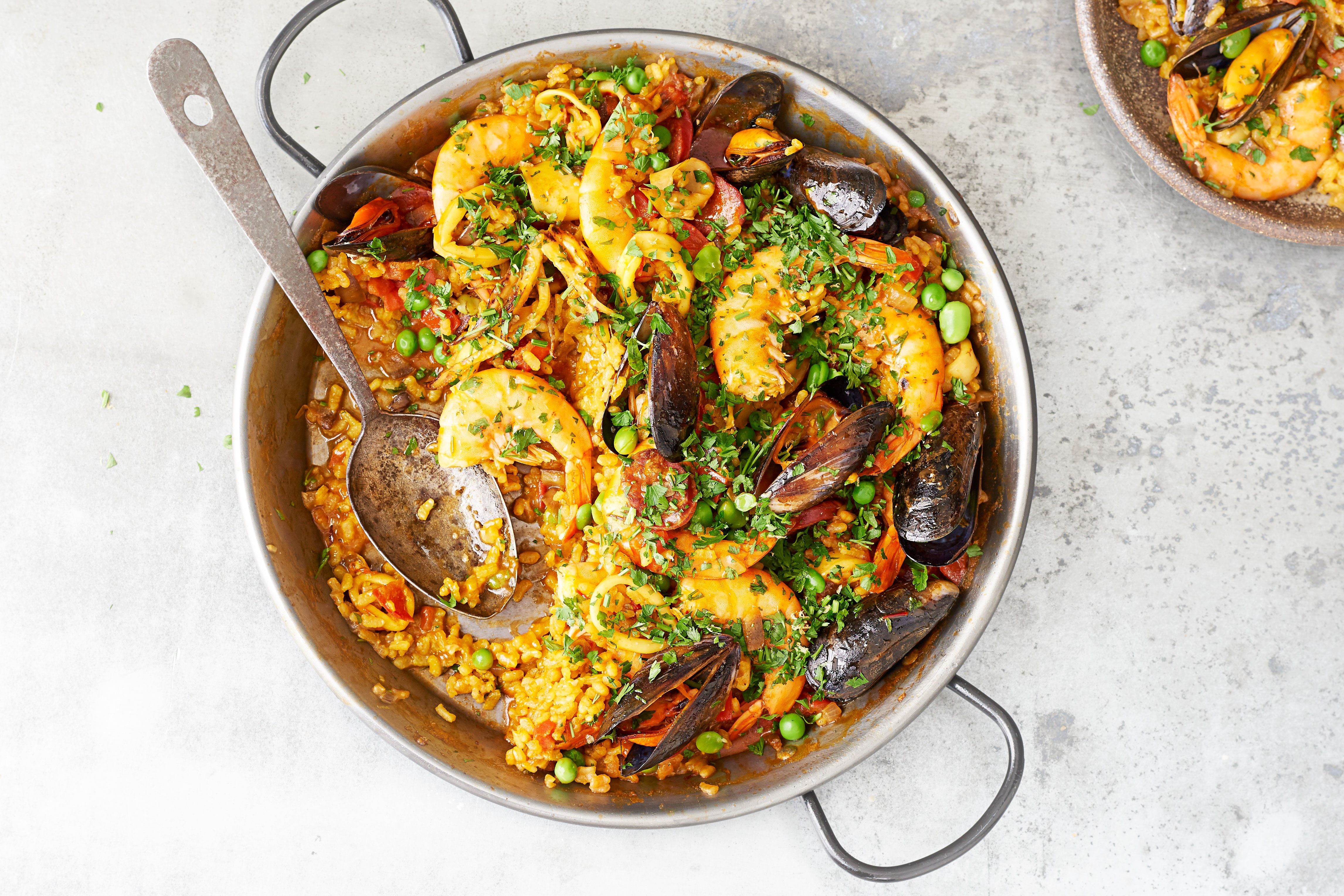
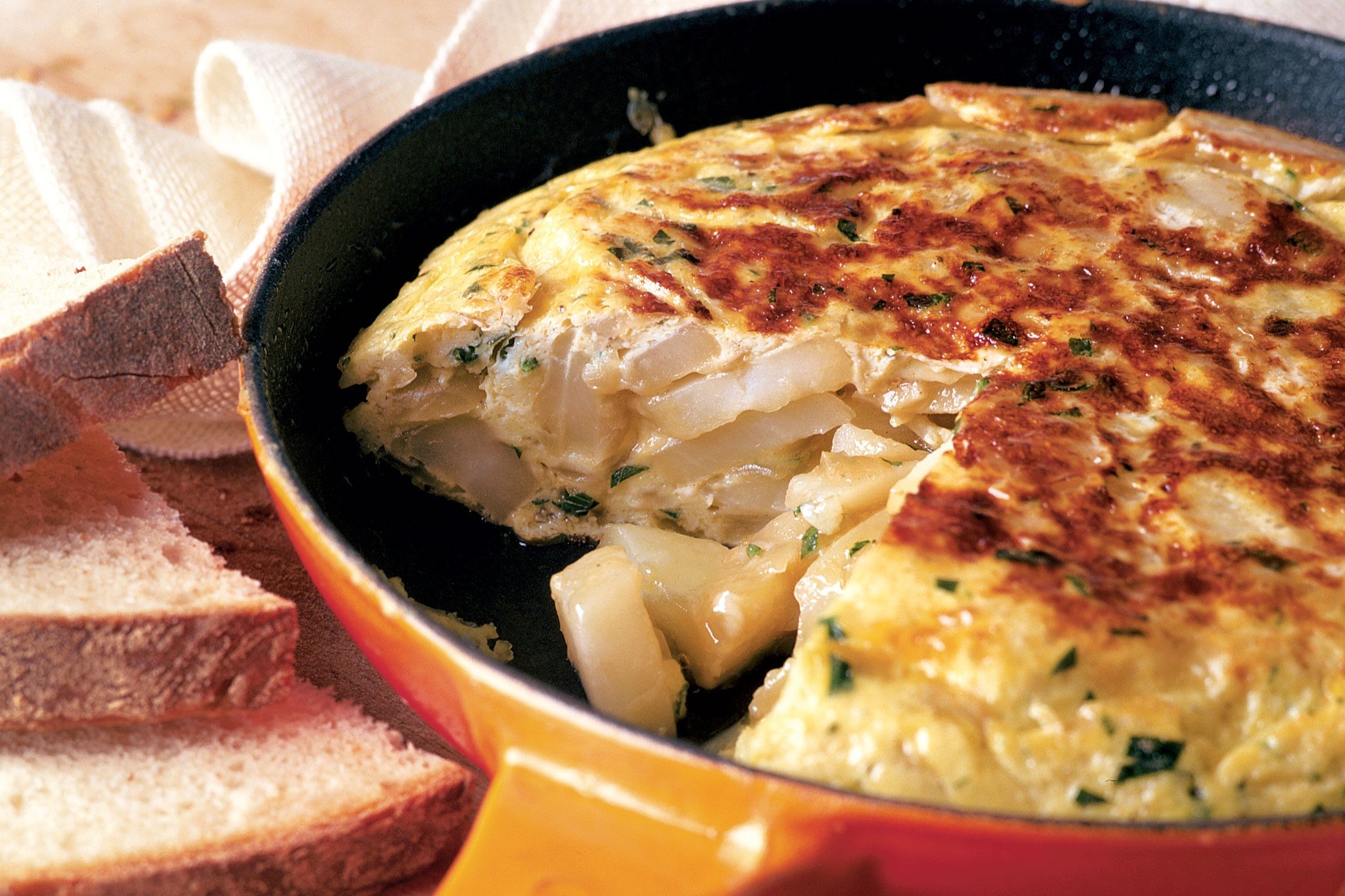

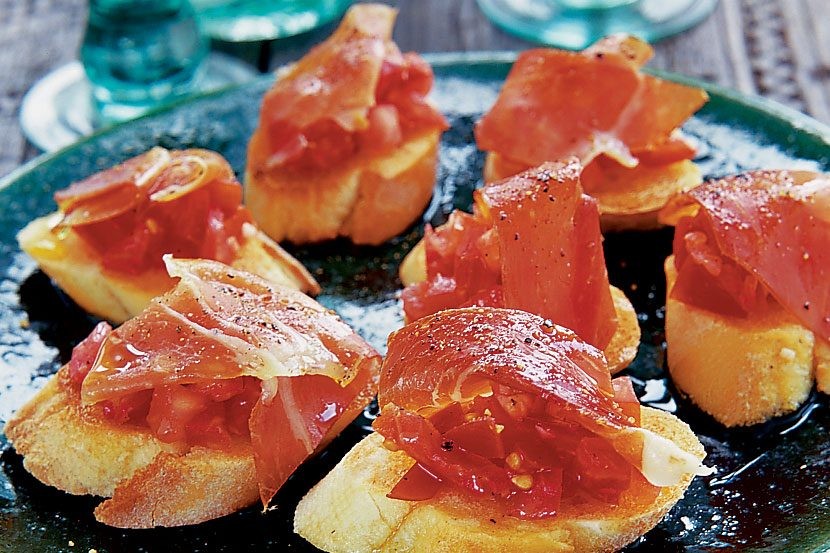
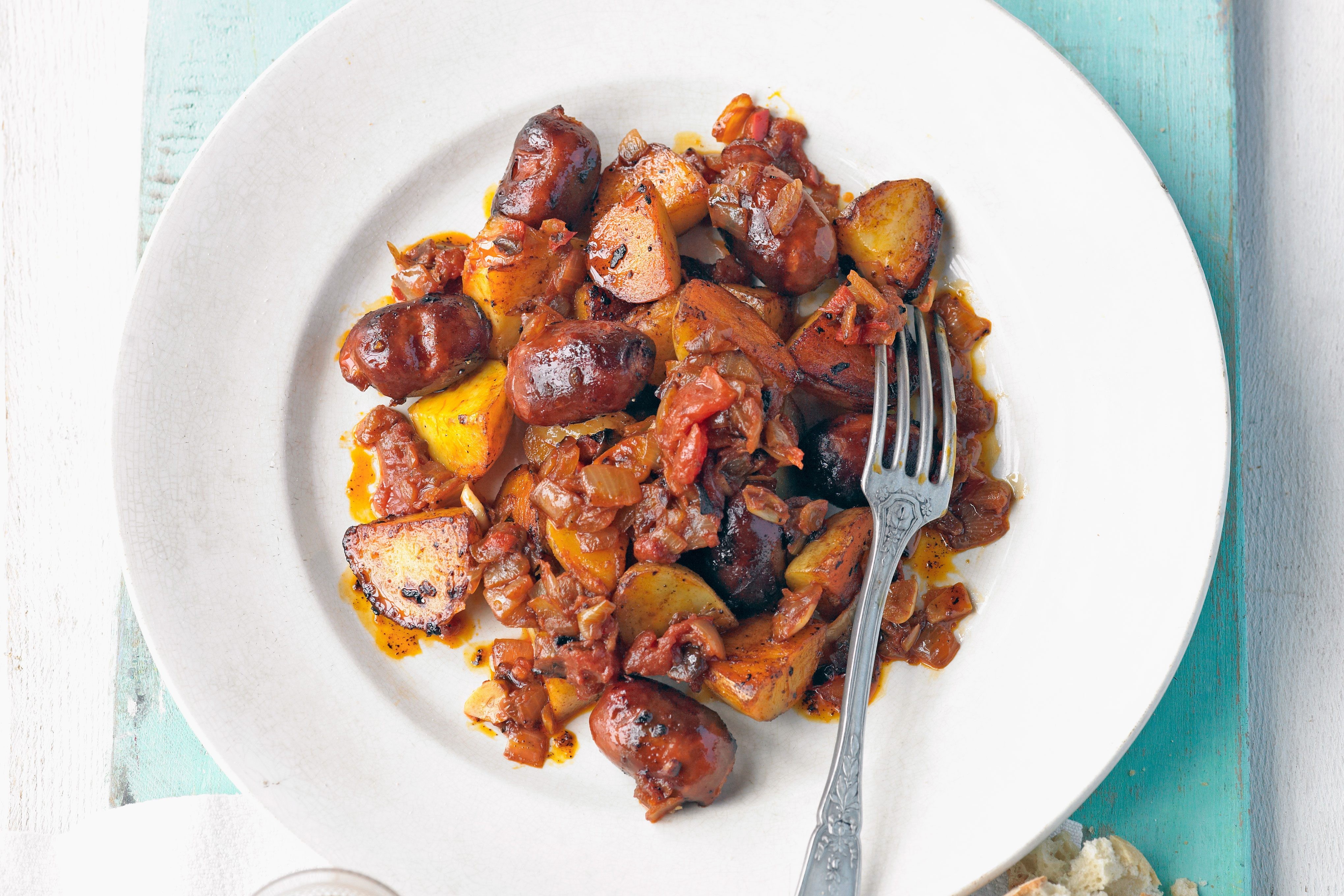
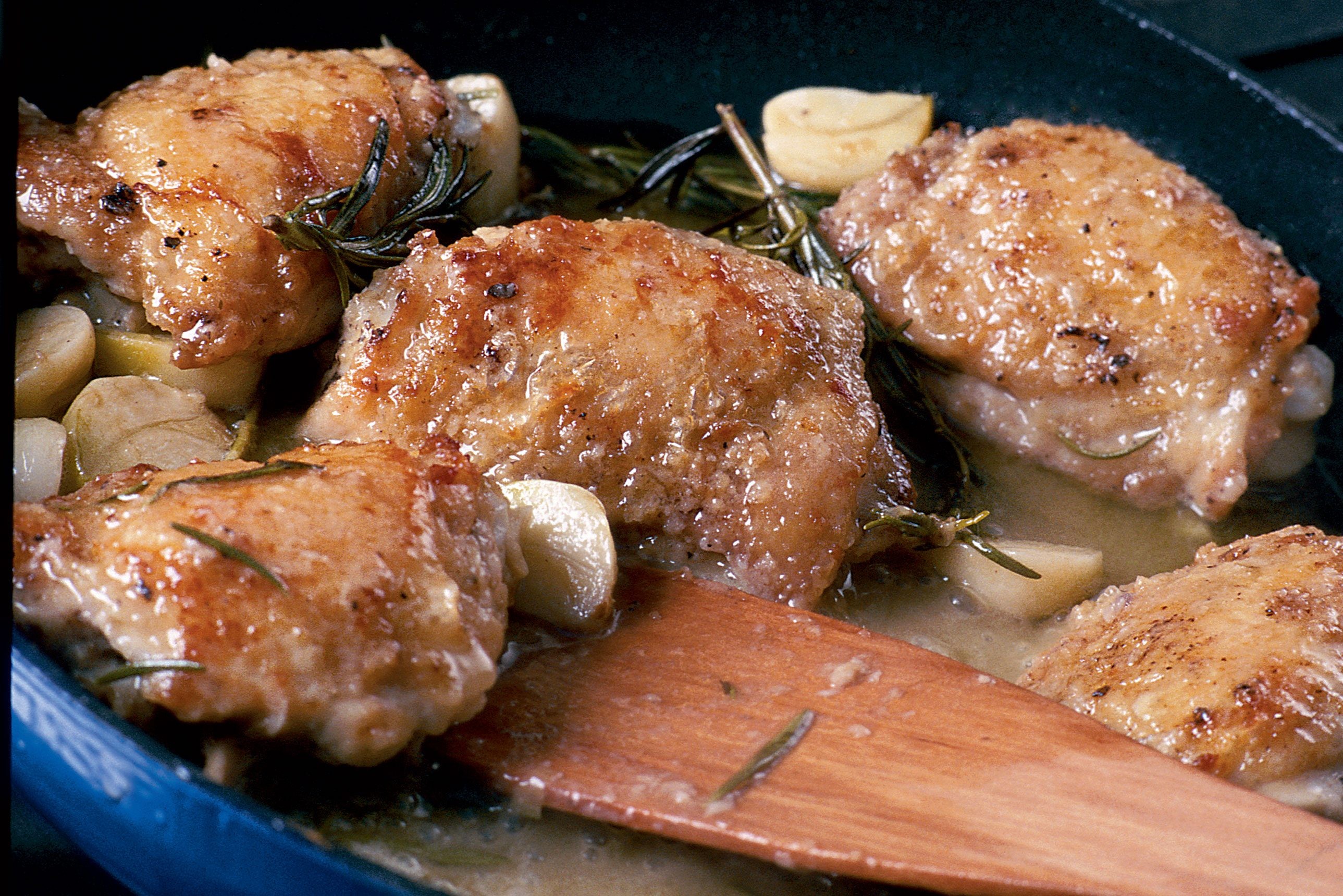
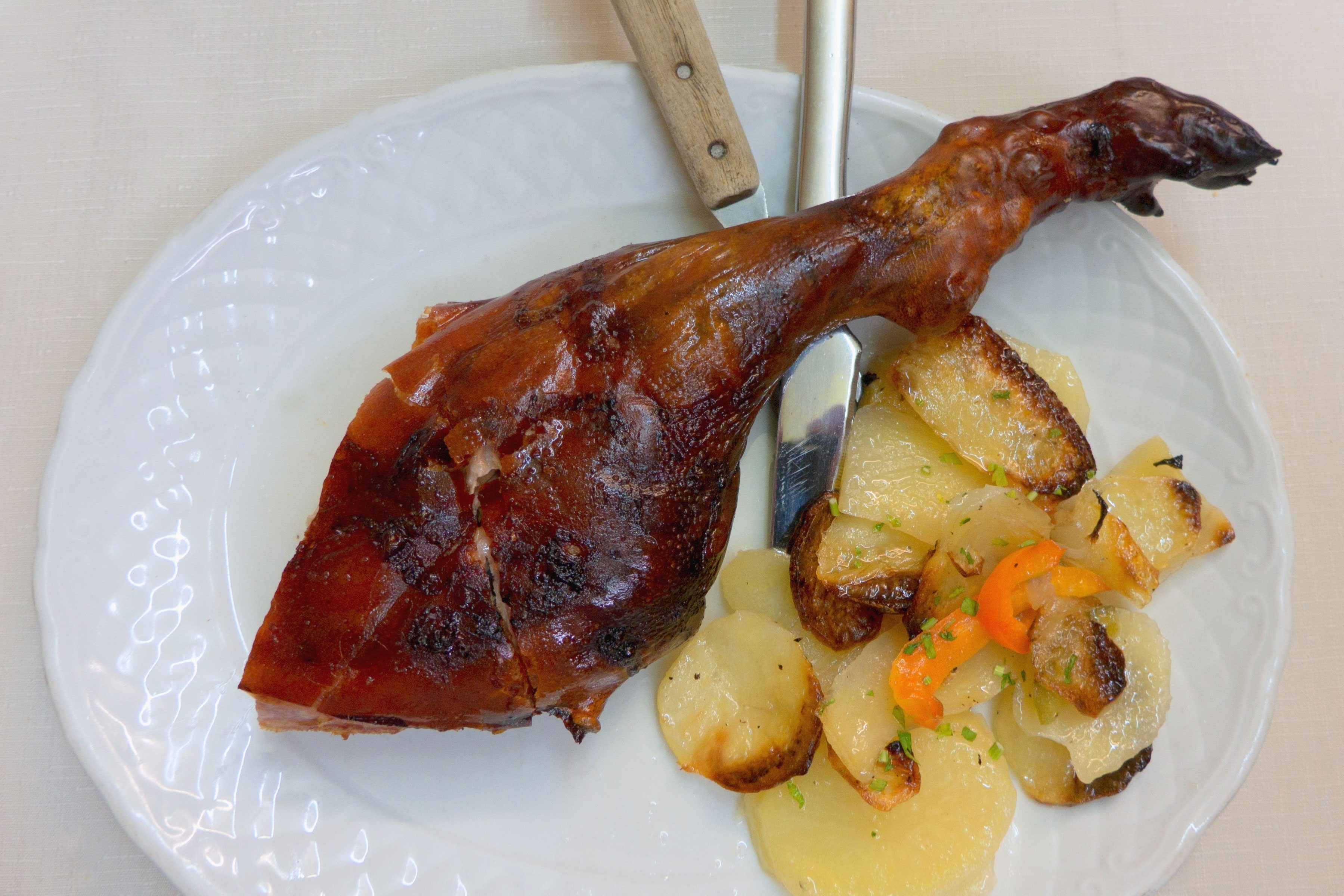
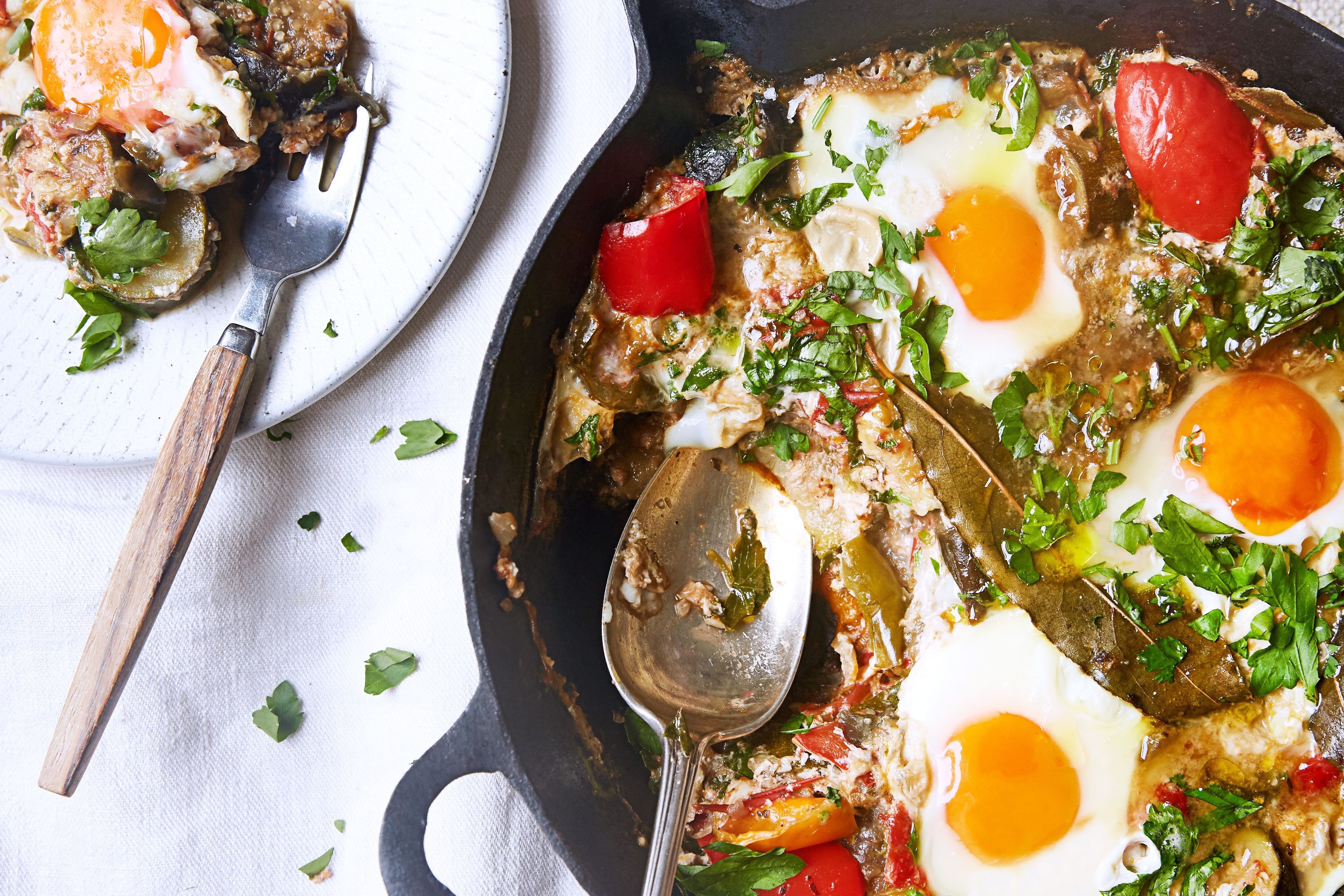
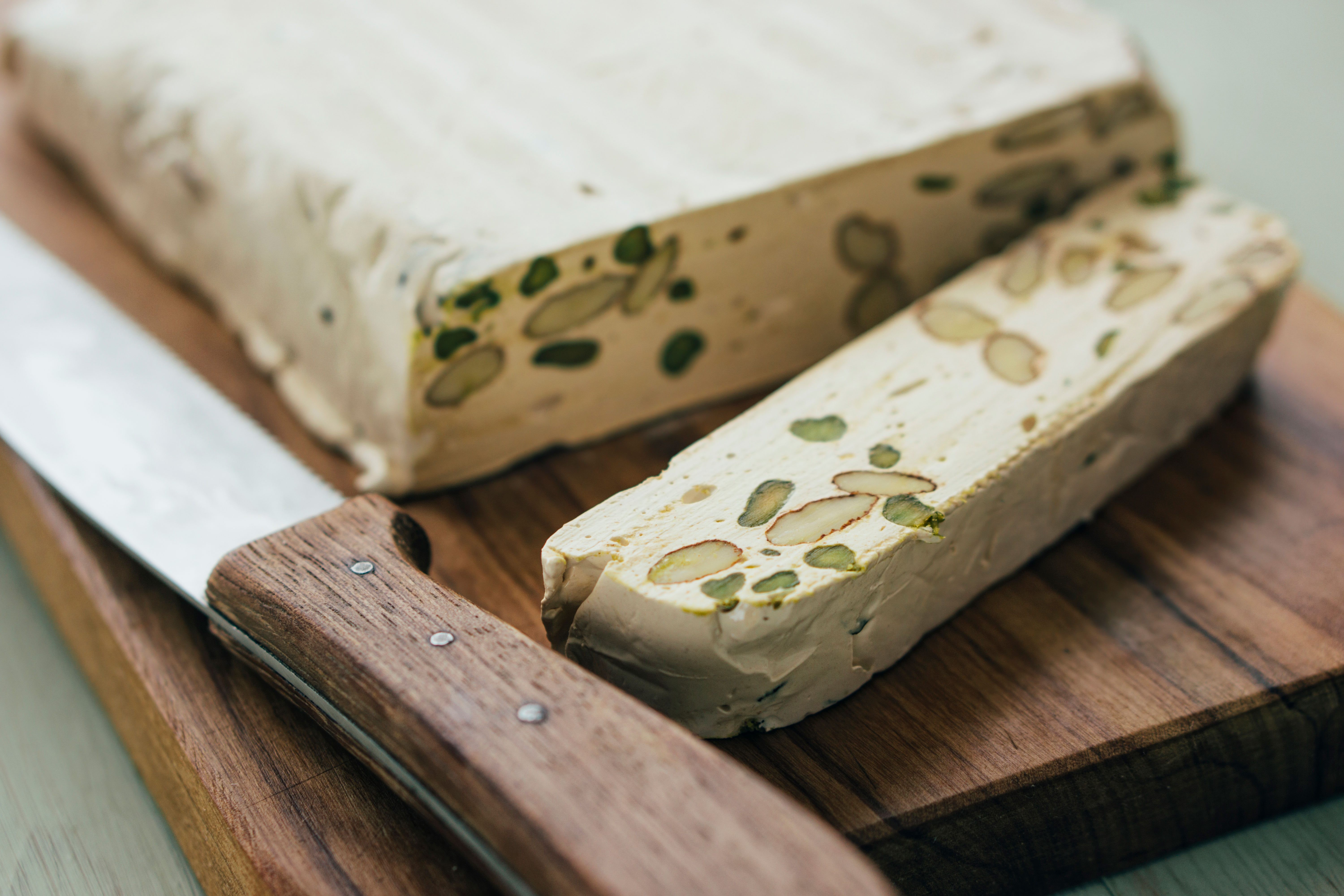
This table highlights the regional diversity of Spanish cuisine, showcasing signature dishes and key ingredients that define each region’s culinary identity. Each dish reflects the unique flavors and traditions of its origin, contributing to the rich tapestry of Spanish gastronomy.
The Evolution of Spain Cuisine Food: From Traditional to Modern
| Era | Culinary Trends | Key Dishes/Techniques | Influences |
|---|---|---|---|
| Ancient | Simple cooking methods, use of basic ingredients | Bread, olive oil, legumes, simple stews | Mediterranean cultures, Phoenicians, Romans |
| Middle Ages | Introduction of spices, development of stews | Stews with meat and vegetables, use of almonds and honey | Islamic culture, trade routes |
| Age of Exploration | Introduction of New World ingredients | Tomatoes, potatoes, peppers, chocolate | The Americas |
| 19th Century | Regional cuisines become more defined | Paella, gazpacho, cocido, regional variations of stews | Regional identities, agricultural practices |
| 20th Century | Rise of modern Spanish cuisine | Tapas, innovative cooking techniques, focus on ingredients | Nouvelle Cuisine, international culinary trends |
| 21st Century | Emphasis on sustainability and local sourcing | Modern interpretations of traditional dishes, molecular gastronomy | Environmental awareness, culinary innovation |
This table illustrates the evolution of Spanish cuisine, highlighting the key culinary trends, dishes, and influences that have shaped Spanish gastronomy over the centuries. From the simple cooking methods of ancient times to the innovative techniques of modern cuisine, each era has contributed to the rich and diverse culinary landscape of Spain.
Top 10 Emerging Trends in Spanish Cuisine
| Trend | Description | Example |
|---|---|---|
| Sustainable Sourcing | Emphasis on locally sourced, seasonal ingredients to reduce environmental impact. | Using organic vegetables from local farms in Pisto. |
| Plant-Based Cuisine | Growing interest in vegan and vegetarian options, with innovative use of vegetables and legumes. | Vegan paella with seasonal vegetables and smoked paprika. |
| Fermentation Techniques | Incorporating fermented foods like kimchi and kombucha into Spanish dishes for added flavor and health benefits. | Fermented tomato sauce for Patatas Bravas. |
| Fusion Cuisine | Blending Spanish flavors with international culinary traditions. | Spanish-Japanese fusion tapas with Iberian ham and miso. |
| Molecular Gastronomy | Using scientific techniques to transform the textures and presentations of traditional dishes. | Spherical olives in a deconstructed gazpacho. |
| Revival of Ancient Grains | Incorporating ancient grains like quinoa and spelt into Spanish dishes for added nutritional value. | Quinoa salad with roasted vegetables and Manchego cheese. |
| Zero-Waste Cooking | Utilizing all parts of the ingredients to minimize waste and maximize flavor. | Using vegetable scraps to make a flavorful broth for Paella. |
| Artisanal Products | Supporting small-scale producers and using high-quality, handcrafted products. | Using artisanal olive oil from a local producer in Tostas de Tomate. |
| Culinary Tourism Experiences | Offering immersive culinary experiences like cooking classes, food tours, and farm visits. | Paella cooking class in Valencia with a local chef. |
| Health-Conscious Options | Creating lighter and healthier versions of traditional dishes with reduced fat and sodium. | Lightened version of Pollo al Ajillo with less olive oil and sodium. |
These emerging trends reflect the dynamic nature of Spanish cuisine, with chefs and home cooks alike embracing innovation, sustainability, and health-conscious practices. By incorporating these trends into their cooking, they are not only creating delicious and exciting dishes but also contributing to a more sustainable and responsible food culture.
FAQ: Your Burning Questions About Spain Cuisine Food Answered
-
What makes Spain Cuisine Food unique?
Spanish cuisine is unique due to its regional diversity, high-quality ingredients, and blend of historical influences.
-
What are the must-try dishes in Spain?
Must-try dishes include Paella, Gazpacho, Tortilla Española, and Patatas Bravas.
-
What is the significance of tapas in Spanish culture?
Tapas are small, savory dishes served with drinks, representing a social and culinary tradition.
-
How has Spain Cuisine Food evolved over time?
It has evolved from simple, basic ingredients to complex, regional specialties influenced by various cultures.
-
What are the key ingredients in Spain Cuisine Food?
Key ingredients include olive oil, tomatoes, garlic, peppers, and seafood.
-
How does regional cuisine vary in Spain?
Each region offers unique dishes based on local ingredients and culinary traditions.
-
What are some popular Spanish desserts?
Popular desserts include Turrón, Churros, and Crema Catalana.
-
What role does wine play in Spanish cuisine?
Wine is an integral part of Spanish cuisine, complementing various dishes and enhancing the dining experience.
-
What are some modern trends in Spain Cuisine Food?
Modern trends include sustainable sourcing, plant-based cuisine, and fusion cuisine.
-
Where can I learn more about Spain Cuisine Food?
You can explore more at FOODS.EDU.VN for detailed recipes, culinary insights, and cultural context.
Ready to Embark on a Spanish Culinary Adventure?
Do you find yourself struggling to find authentic and easy-to-follow Spanish recipes? Are you eager to explore the rich culinary traditions of Spain but don’t know where to start? Or perhaps you’re simply looking for expert advice on mastering classic dishes like Paella or Tortilla Española?
At FOODS.EDU.VN, we understand your challenges. That’s why we offer a wealth of resources to help you discover the vibrant world of Spain Cuisine Food. From detailed recipes and step-by-step tutorials to insightful articles on regional specialties and culinary techniques, we’ve got everything you need to embark on a delicious journey.
Visit FOODS.EDU.VN today and unlock a treasure trove of culinary knowledge. Learn how to create authentic Spanish dishes that will impress your friends and family, and discover the joy of cooking with passion and expertise.
Contact Us:
- Address: 1946 Campus Dr, Hyde Park, NY 12538, United States
- WhatsApp: +1 845-452-9600
- Website: FOODS.EDU.VN
Let foods.edu.vn be your guide to the wonderful world of Spain Cuisine Food. Your culinary adventure awaits.
